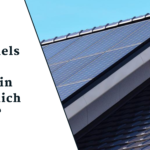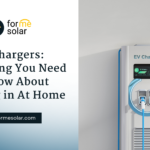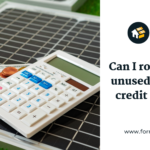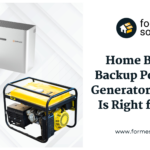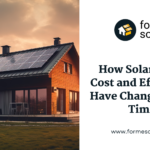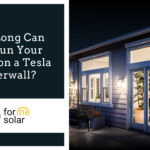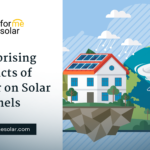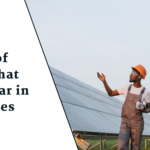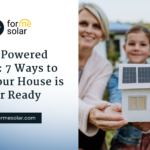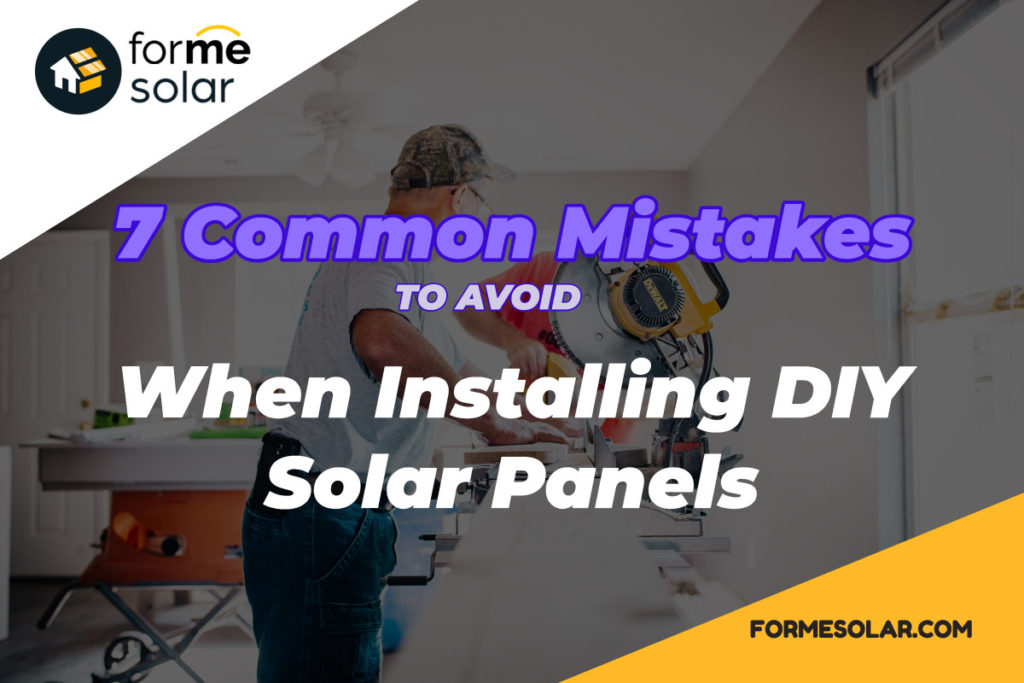
Table of Contents
Common Mistakes When Installing DIY Solar Panels
Whether you realize it or not, your solar energy system will be one of the essential items in your home. With proper installation and maintenance, your solar energy system can provide relief from high electricity bills for up to 50 years!
You want to get your money’s worth from any appliance in your home. That’sThat’s why, when the time comes to installing a solar energy system, you need to get the job done right. Many people view adding solar panels to your home as a simple DIY project. Well, it isn’t, and here are five of the most common mistakes that can lead to a disastrous and dangerous energy replacement.
Top 7 Common Mistakes when Installing DIY Solar Panels
- Forgetting about the pre-installation process
- Not getting help installing your solar system
- Neglecting the Electrical Prep Work
- Failing to measure your roof lines
- Ignoring safety concerns with DIY solar panels
- Leaving the junction box exposed
- Overtightening Nuts, Bolts and Clamps
Forgetting About the Pre-Installation Process
Installing DIY solar panels isn’t as simple as visiting your local Home Depot, buying the solar equipment, and placing panels on your roof. You need to create a set of engineering plans and obtain permits. Depending on the work scope, you will need a building permit, electrical permit, or both from your city or county. You also need to work with your utility company to connect your solar panel system to the power grid. That’s because every solar system Forme Solar Electric installs is tied to the electric grid.
Building permits and utility interconnection applications typically cost hundreds of dollars. A hidden cost that most DIY solar installers are not aware of. These applications take time to process and often require corrections. Contacting each entity and filling out the correct applications takes time and money!
In addition to ensuring that your system correctly meets city regulations, it is also essential to know how to best place your panels to optimize performance. Shading and roof plan placement can substantially impact the cost and ROI of your solar system. You may need to cut down trees or reposition your system to make sure you achieve the best solar production.
Forme Solar Electric knows the city and utility regulations and laws where we install solar. We use an in-house team of engineers and permit technicians to handle the behind-the-scenes process. Our goal is to make it look easy because of our experience. It allows us to do it quickly and efficiently.
Not getting help installing solar - Don’t Solo DIY Solar
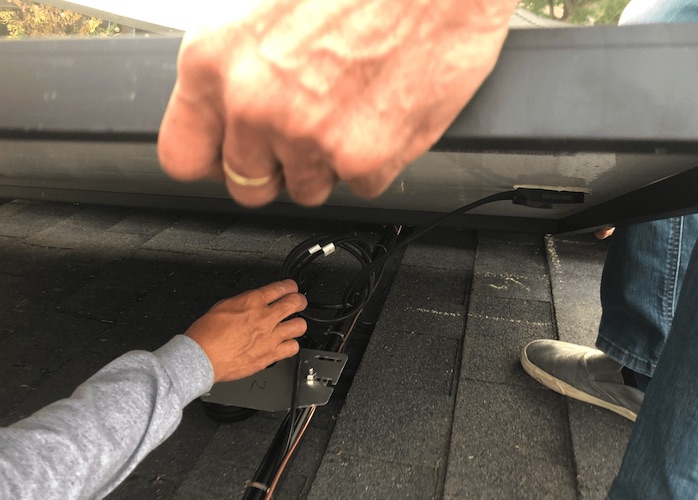
We can’t stress this one enough; installing solar panels is not a one-person job. No matter how skilled you are, even our crews have an average of 4-6 trained professionals that complete an installation. Most projects are finished in 8 hours, but that is typically 32 to 48 hours of work. A lot of prep work occurs from the roof rep to installing the racking that holds the panels in place. If you don’t have at least two people to help you, installing solar panels on your roof can take at least a week to install.
Neglecting the Electrical Prep Work

A lot of experienced electricians have a hard time maintaining the quality and safety of their solar installations. Installing a solar energy system requires a lot of nuances to complete its solar installations correctly. Some audits have shown that even with experienced solar installers, up to 50% of solar installations have been wired incorrectly. And it is quite dangerous when an electrical fault happens on your home’s roof. DC is also more challenging of a wiring system compared to AC. With solar, you are converting DC into AC electricity.
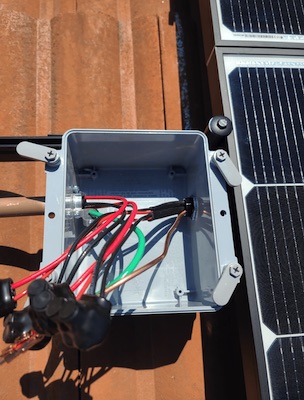
Some issues often occur with the “grounding” or “electrical bonding” of a system on the roof. You have to ensure that you correctly understand the system to ensure you don’t create a dangerous solar PV system.
It isn’t necessary to turn off your electricity when you start adding solar energy to your home. However, for any DIY project that deals with electricity, we recommend that you turn off your service panel before you work on connecting your system to your electrical panel.
Failing to Measure Your Roof Lines
Measure twice, cut once. That is precisely the same type of view you should take when installing solar panels on your roof. Many solar panel DIYers purchase a set of parts to find out that their money and time were wasted due to inexperience. Before you start buying your solar equipment, make sure that you know exactly what type of equipment you need and how much space you have.
Every home is different, every roof is unique, and the kind of equipment you need can vary dramatically. That is why it is essential to mark and measure your roof to properly ensure you can fit the correct number of solar panels on your home’s roof. Before you start buying critical parts like your solar panels, racking, conduit, and wiring, make sure you take measurements. Correctly measuring your rooflines is essential to ensure that you buy the correct type of equipment and have a smooth process during your permit process.
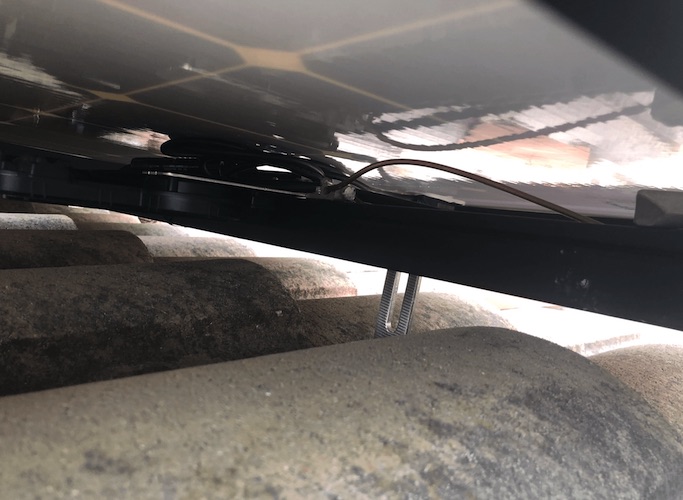
Ignoring safety concerns with DIY solar panels
Solar panels are primarily installed on a home's roof. Meaning there is a risk of falling off your roof or ladder during solar panels’ installation. For DIY solar installation, you will need to move a lot of equipment to your home’s roof. Some of this equipment is either heavy or cumbersome. Solar panels weigh 45 pounds, and you will also need to carry long strips of solar rackings up a ladder. Solar installers have concrete safety equipment to adhere to OSHA guidelines, from ladder straps to secure their ladder to body harnesses. Buying equipment like harnesses to ensure that you are safe is expensive, especially if it just for a one-time-use.
Also, electrical safety is also a substantial concern. When connecting your solar energy system or to the grid, you need to ensure that you are safely handling all of the wirings. Most homeowners may feel comfortable moving heavy and cumbersome equipment but not dealing with electricity. Poorly working on your home’s electrical system can lead to expensive repairs, but it can also lead to severe bodily harm if done improperly.
Working on your roof and dealing with electrical wiring are two factors that can lead to a high chance of injury. If there is ever a problem with your solar energy system, the repair and responsibility will ultimately rest on you.
Leaving the junction boxes exposed
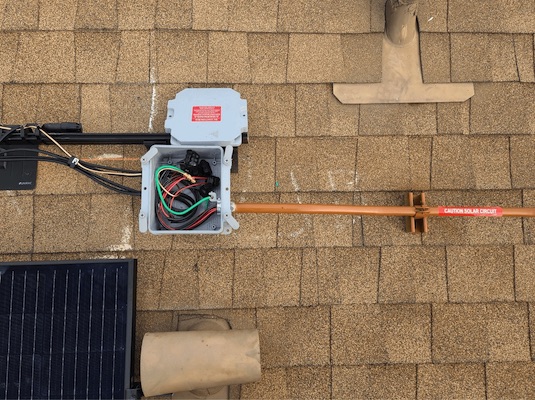
While this sounds like a silly warning, it’s one to take seriously. Your junction box is often one of the most overlooked pieces of your home’s solar energy system. Most DIYers primarily focus on installing the panels and forget to pay little mind to the electrical components that connect the panels. The solar junction box has a straightforward but essential role. It houses all of your solar energy system’s electrical wiring and must be protected from the elements.
Junction boxes also help mitigate the excessive heat that is generated by higher module outputs. Uneven gaps or improper installation will create issues in the future. When these accidents happen, it usually leads to short circuits and burnt junction boxes. Professional solar installers will wire up a solar energy system to last 20 years, but poorly installed junction boxes can lead to a lower lifetime for your solar energy system. So they may only last for three to eight years instead.
Overtightening Nuts, Bolts and Clamps
One of the most common mistakes we see is a lack of experience properly tightening the bolts that connect your solar energy system. Because your system is built to last for 25 years, most connections use nuts and bolts since plastic attachments and adhesives can wear down over time. The nuts and bolts that attach your solar panels to the mounting don’t need to be overtightened.
While tightening the nuts and connections is essential, if you overtighten them against the surface of your solar panels, it can easily dent or break the solar panels’ frame. This applies to your junction box as well. Because your junction box holds all of your electrical wirings, it is vital to ensure that the seals are tight but not overtightened.
Install Your Solar Energy System Worry-Free with Forme Solar
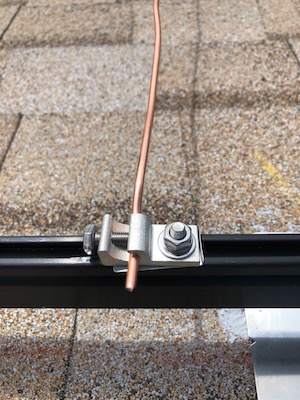
Forme Solar Electric believes in providing fast, safe solar installations for customers. With our history of solar repair, we have seen many mistakes that can be made, from filing the paperwork with the city, to safely installing solar panels to last for years. Keep your long-term costs down by trusting Forme Solar Electric to come out and get the job done right the first time.
Contact us today to get in touch with a licensed electrician who can get your solar panels installed quickly at a competitive rate. We send out a field energy consultant to assess your home and determine if it’s right for solar. Forme Solar Electric takes care of every step from the time you sign your contract by installing your panels by our employees. Our goal is to make the installation easy for our customers.

